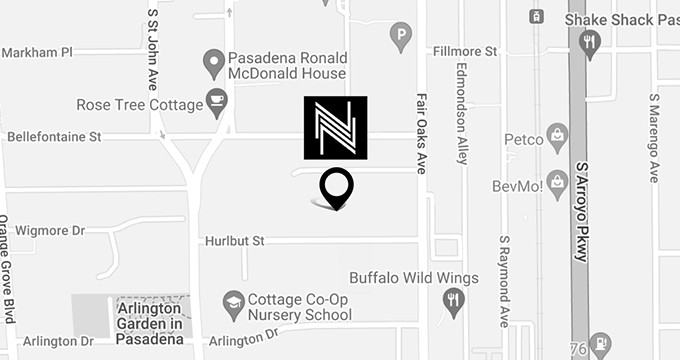
Choosing between Sculptra and traditional fillers isn’t just about preference—it’s about understanding how your skin ages and what your long-term goals truly are. While both treatments restore volume, they work in completely different ways beneath the surface. For individuals seeking a natural transformation over time—or instant refinement for a special occasion—the right choice depends on biology, expectations, and how gracefully you want to age into your results.
What Are Dermal Fillers? Understanding the Basics
Dermal fillers, especially those made from hyaluronic acid (HA), are gel-like substances injected beneath the skin to instantly restore lost volume, smooth out wrinkles, and enhance facial contours. What’s often overlooked is how HA fillers also attract and retain water, giving skin a hydrated, supple glow—something that matters greatly in thinner or sun-damaged skin. While results are immediate, they aren’t permanent. Your body gradually absorbs the filler over 6 to 18 months depending on the formula and area treated. Another rarely mentioned benefit? HA fillers are reversible. If results don’t match your expectations or complications arise, an enzyme called hyaluronidase can dissolve the filler. This makes them a popular starting point for those new to injectables. Their flexibility and precision are ideal for delicate areas like the lips, tear troughs, and nasolabial folds, offering fine-tuned enhancement with little downtime.
Comparing Results: Immediate vs Gradual Transformation
Dermal fillers, like those made with hyaluronic acid, are designed for instant gratification. You walk out of the office with plumper cheeks, smoother lines, or fuller lips. But that fast payoff often fades in under a year. Sculptra, on the other hand, asks for patience. It doesn’t show full results for 6–12 weeks because it works beneath the surface, stimulating your own collagen to rebuild structure slowly. This gradual change creates a softer, more organic look that blends into your features over time. Interestingly, this slow evolution can also be psychologically easier for patients—friends and coworkers often notice that you “look great,” without pinpointing why. For people uncomfortable with dramatic changes or the idea of injectables looking “obvious,” Sculptra offers a more discreet path to rejuvenation that feels like your skin is doing the work—because it is.
Treatment Areas: Where Each Excels
Not all injectables are created equal—and neither are the areas they treat. Sculptra and hyaluronic acid fillers both have strengths, but choosing the right one often depends on your anatomy, aging pattern, and long-term goals. Here’s where each option typically shines:
- Sculptra works best for:
- Cheeks and mid-face: Adds deep structural volume by rebuilding collagen over time.
- Temples: Subtle filling without puffiness; ideal for hollowing from bone loss.
- Jawline and chin: Offers natural contouring and firmness without looking overfilled.
- Buttocks (off-label use): Enhances shape and volume through collagen stimulation.
- Deep nasolabial folds or marionette lines: Rebuilds dermal support gradually.
- Hyaluronic acid fillers work best for:
- Lips: Precise, immediate shaping and hydration.
- Under-eye hollows: Quick correction of tear trough shadows.
- Nasolabial folds: Smoother appearance with fast results.
- Fine lines and wrinkles: Especially around the mouth or eyes.
- Hands: Restores volume and smooths skin with visible change right after treatment.
Knowing where each excels helps avoid the “overdone” look and ensures the treatment matches both facial anatomy and aesthetic intent.
Longevity and Maintenance: How Long Will Results Last?
One key difference between Sculptra and hyaluronic acid fillers is how the body processes them. Sculptra stimulates collagen growth, meaning results appear gradually but can last up to two years or more, especially with the full series of treatments. It encourages your skin to rebuild itself from the inside out, making maintenance less frequent over time.
Hyaluronic acid fillers, on the other hand, give instant results but usually last 6 to 18 months depending on the area treated, the product used, and your metabolism. They’re reversible, which can be a benefit for first-timers but often require regular upkeep to maintain volume.
A thoughtful maintenance plan—tailored to how your body responds—can balance both immediate and lasting beauty without overcorrection.
Longevity and Maintenance: How Long Will Results Last?
Understanding how long your results will last helps you plan realistically for upkeep. Each option—Sculptra and traditional fillers—has a different rhythm and maintenance strategy:
- Sculptra:
- Results develop gradually over 6–12 weeks as collagen production increases.
- With a full treatment plan (usually 2–3 sessions), results can last up to 2+ years.
- Because it works with your body, Sculptra often leads to more natural-looking aging over time.
- Maintenance is less frequent, often once a year or longer, depending on the person.
- Works best when collagen support is built before volume loss becomes severe.
- Hyaluronic Acid Fillers:
- Provide immediate volume and contour, ideal for events or quick fixes.
- Duration ranges from 6 to 18 months depending on the filler type and treatment area.
- Some areas (like lips) break down filler faster due to motion and blood flow.
- Require regular touch-ups to maintain a consistent look.
- Fully reversible with hyaluronidase, which can be comforting for new patients.
Planning your approach around longevity can help avoid overuse and maintain a refreshed, natural appearance over time.
Custom Combinations: Why It’s Not Always Either/Or
Choosing between Sculptra and traditional fillers doesn’t have to be a one-or-the-other decision. In fact, many advanced injectors now combine both to create more natural, layered results. Sculptra is often used as a foundation to stimulate long-term collagen production, especially in larger areas like the cheeks or temples. Then, hyaluronic acid fillers can fine-tune specific concerns—like lips, under-eye hollows, or fine lines around the mouth—where precision and immediate results matter. This strategy avoids an overfilled look and supports graceful aging by strengthening your skin’s structure from within. The key is understanding that both tools have their strengths—and when used together strategically, they can elevate and personalize your results more effectively than either could alone.
Conclusion
Deciding between Sculptra and traditional fillers depends on your goals, timeline, and how your skin responds to treatment. While hyaluronic acid fillers offer quick fixes with precision, Sculptra works behind the scenes to rebuild volume naturally over time. Often, the best outcomes come from a thoughtful combination tailored to your features and lifestyle. A personalized plan can prevent overtreatment and help maintain balance as your face evolves. If you’re ready to explore which option—or blend—is right for you, visit us at Dr. Nima Plastic Surgery or call (626) 696-8181 to schedule your private consultation. Your most confident, refreshed self might be just one visit away.


